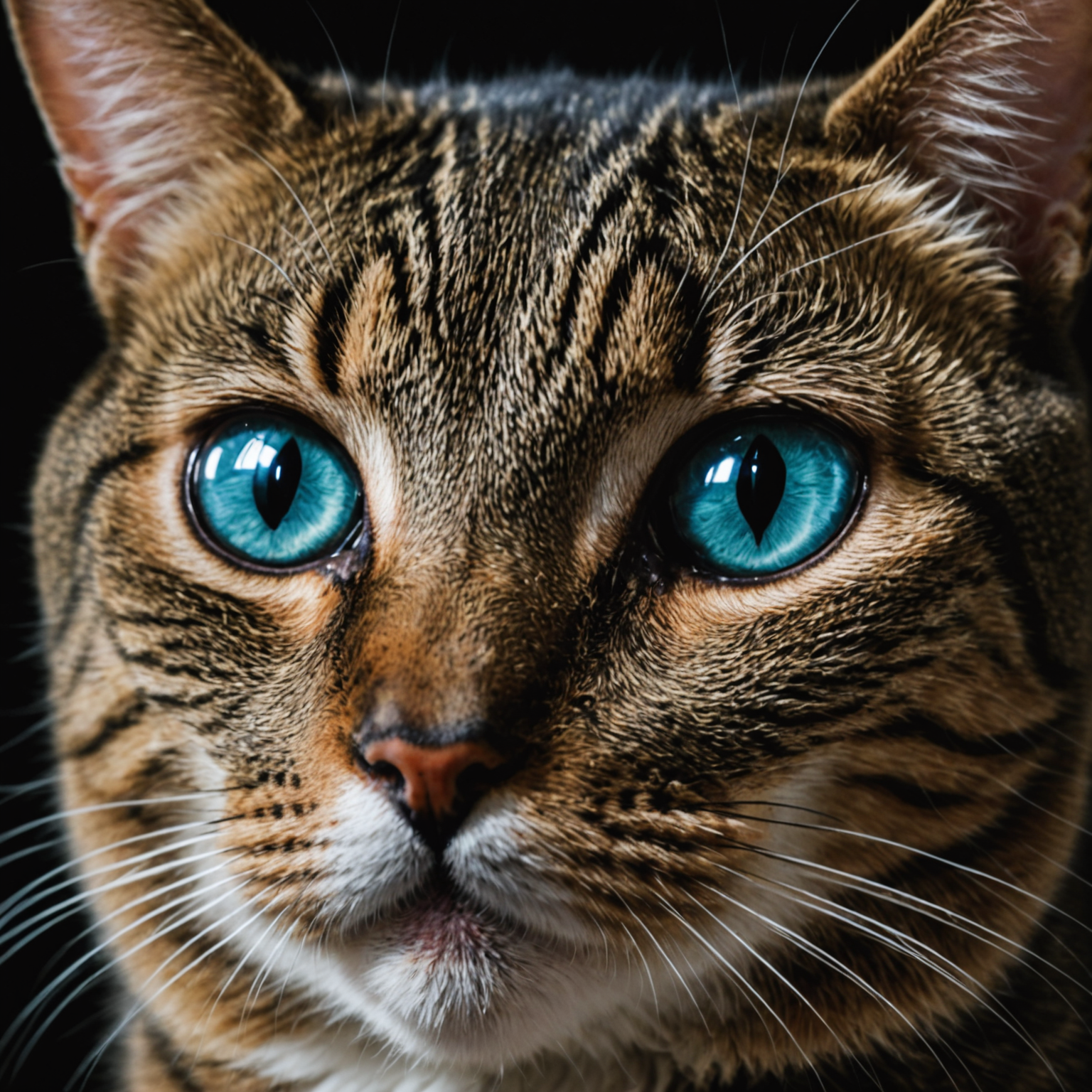Why cats’ eyes glow in the dark – explained with a laser pointer
 A cat’s eyes glowing eerily in the dark when illuminated by a laser pointer, revealing the tapetum lucidum at work.
A cat’s eyes glowing eerily in the dark when illuminated by a laser pointer, revealing the tapetum lucidum at work.
Discover the science behind that eerie glow and how a laser pointer reveals your cat’s secret night vision superpower.
By Peter Teoh, Science Writer
Have you ever shone a flashlight or laser pointer at a cat’s eyes in a dark room and watched them light up like tiny glowing orbs? That mysterious glow isn’t magic — it’s a clever natural trick called the tapetum lucidum that helps cats see in the dark. Let’s dive into how this works and what happens when you shine a laser pointer right into those shining eyes.
What Makes Cat Eyes Glow?
Cats’ eyes glow because of a special layer behind their retinas called the tapetum lucidum, Latin for “bright tapestry.” This layer is made up of cells containing crystals that act like a mirror. When light enters a cat’s eye, it hits the retina first, where light-sensitive cells called rods and cones detect it. But not all the light is captured on the first pass — some passes through to the tapetum lucidum, which reflects it back through the retina a second time. This reflection boosts the amount of light available to the retina, making it easier for cats to see in dim conditions. The reflected light is what causes their eyes to glow in the dark when light shines on them[1][3][4].
Why Do Cats Need This Night Vision Trick?
Cats are crepuscular, meaning they are most active during dawn and dusk — those tricky low-light times when many other animals struggle to see. Their survival depends on spotting prey or predators in these dim conditions. Thanks to the tapetum lucidum, cats can use even tiny amounts of light to navigate and hunt effectively. In fact, cats can see in lighting conditions that are about 16% as bright as what humans need, giving them a serious edge when the sun goes down[2][3].
How Does the Laser Pointer Reveal This?
When you point a laser pointer at a cat’s eyes in the dark, the tiny beam shines through their pupils and hits the tapetum lucidum. Because this layer reflects light, you see a bright glow — often green, yellow, or blue — coming right back at you. The color can change depending on the angle of the light and the specific structure of the tapetum in each cat[1][5].
This glowing effect is similar to what happens when you take a photo of a cat in low light using flash. The flash’s light reflects back from the tapetum, causing the eyes to shine in the picture. Humans don’t have a tapetum lucidum, so instead, our eyes sometimes show a red-eye effect caused by the blood vessels behind our retinas[4][5].
What’s Happening Inside the Cat’s Eye?
To understand the glow, picture the cat’s eye like a dark room with a mirror at the back. When a light shines in, it bounces off the mirror and returns, giving the cat’s retina a second chance to catch it. This doubles the chance for their eyes to detect faint light — especially useful in the dark.
In addition, cats have large pupils that can open much wider than human pupils, allowing even more light to flood in. They also have more rods—the cells that detect low light—than humans do, making their night vision even better[2][3].
Is It Safe to Shine a Laser Pointer in Cats’ Eyes?
While it’s fascinating to see this glowing effect, be careful when using laser pointers around cats. The beam is very focused and can hurt their eyes if shined directly for too long. Use laser pointers as toys by moving the light on the floor or walls rather than aiming straight into their eyes to keep playtime fun and safe.
Closing Thoughts
The glowing eyes of cats are not just a spooky trick — they’re a brilliant evolutionary adaptation that lets these amazing animals see in the dark. The tapetum lucidum acts like a natural mirror, reflecting light back through their eyes and giving them night vision powers we humans can only dream of. Next time you see your cat’s eyes shining, you’ll know there’s a fascinating science behind that glow — one that’s perfectly designed for prowling in the shadows.
Side Notes
- Tapetum lucidum is found in many nocturnal animals, including dogs, deer, and owls — not just cats.
- The glow color can vary by species and even between individual cats.
- Human eyes lack this layer, which is why our night vision is much worse.
Trending Sidebar
- Why do owls have huge eyes? Owls also have excellent night vision but rely more on large eyes and more rods than a tapetum lucidum.
- Can cats see color? Yes, but not as vividly as humans — their eyes are tuned more for light sensitivity.
- Fun fact: Cats’ whiskers also help them navigate in the dark by sensing their surroundings.
Reference links
- Why Do a Cat’s Eyes Glow? - Hill’s Pet Nutrition
- Eyeshine: The Reason Cats’ Eyes Glow When the Lights Go Down - A-Z Animals
- Why Do Eyes of Cats, Dogs and Other Animals Glow in the Dark? - Sci.News
- Reflectors and the Cat’s Eye - Stony Brook University
- The Spooky Science of Glowing Eyes in Cats - Panthera.org
Leave a comment